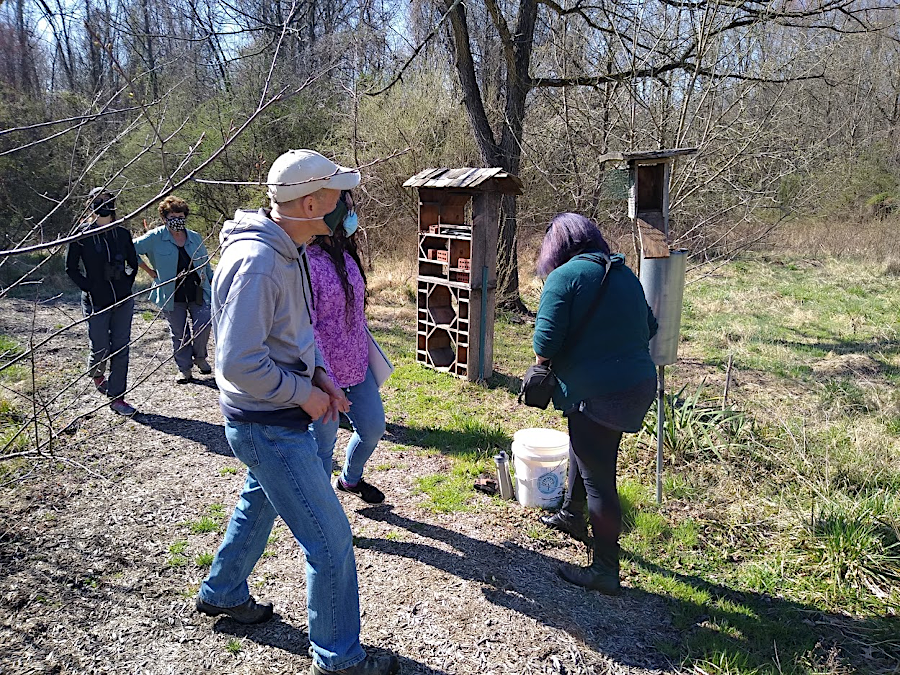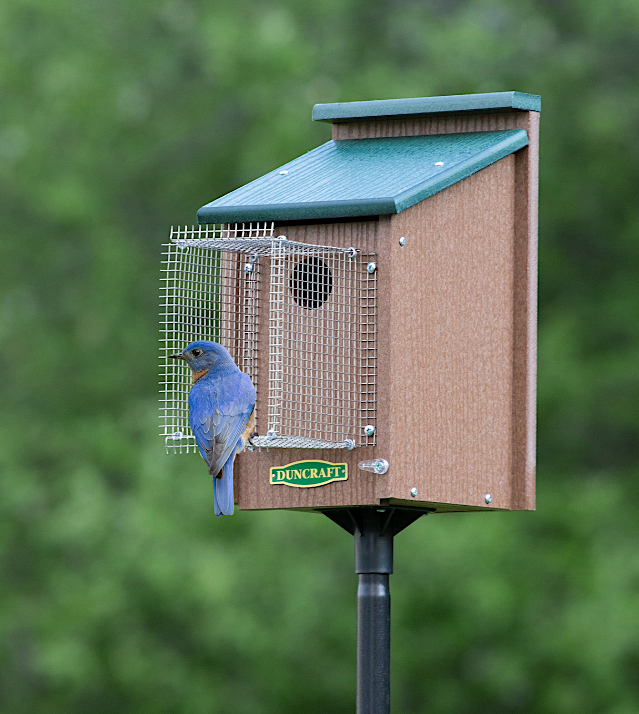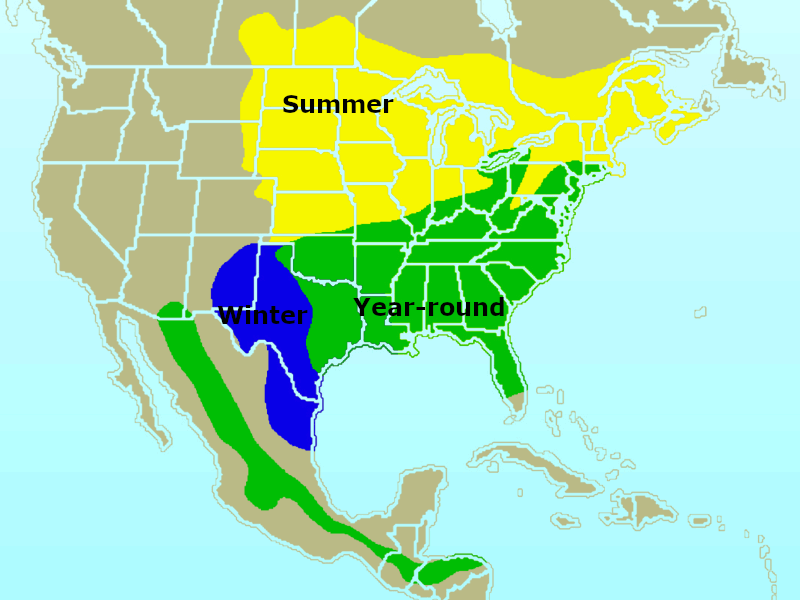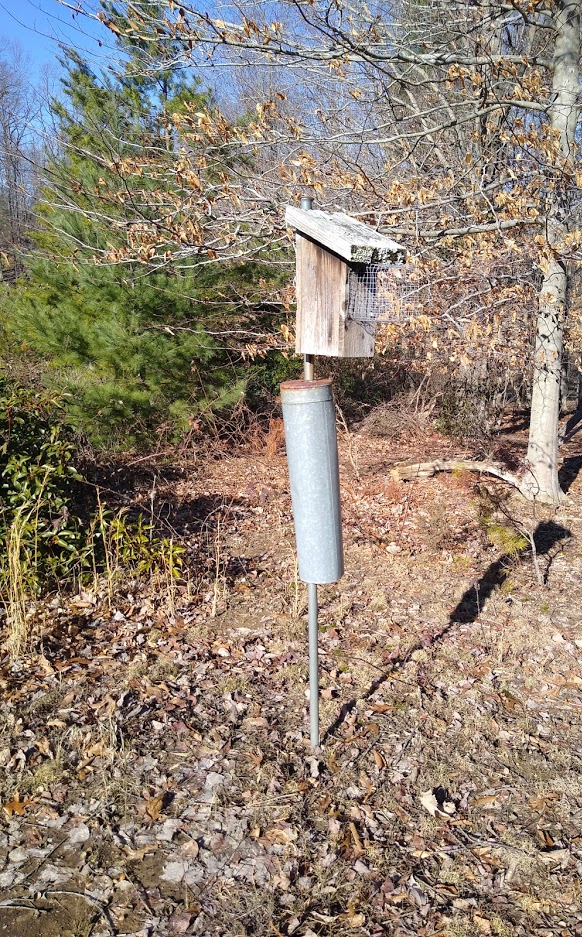
Eastern Bluebirds depend upon artificial nest boxes to reproduce in Virginia
Source: US Fish and Wildlife Service, Eastern bluebird

Eastern Bluebirds depend upon artificial nest boxes to reproduce in Virginia
Source: US Fish and Wildlife Service, Eastern bluebird
Eastern Bluebirds (Sialia sialis) live in Virginia 12 months a year. In the Spring, the female lays 1-6 eggs, one a day. Incubation starts when the last egg is laid, and all hatch the same day about two weeks later. They feed mostly on insects and berries during the Summer, and primarily berries in the winter.1
Bluebirds were once as common as robins, but populations dropped significantly after the 1920's. Two introduced species, the House Sparrow (Passer domesticus) and European Starling (Sturnus vulgaris), were more successful in occupying the nest sites used by bluebirds - cavities excavated by woodpeckers.
Recovery of the bluebirds has been accomplished by creating supplementary nest sites. Volunteers have manufactured and installed bluebird boxes, creating "trails" where boxes are checked regularly.

even during the COVID-19 pandemic in Spring of 2021, volunteers checked bluebird nesting boxes
The 1.5" entry holes in the boxes will exclude starlings. A metal shield on the pole supporting a box, plus a wire guard (known as a "Noel") around the hole, will exclude most snacks looking to make a meal out of nestlings. However, house sparrows who try to next inside must be evicted. Boxes placed on the edges of fields (including pastures, golf courses, lawns, and cemeteries) provide ready access to insects but may also be in direct sunlight for part of the day, so nesting material may need to be realigned to ensure adequate ventilation.
Bluebirds may produce three broods a year, with the young flying out of the box ("fledging") after about three weeks. Volunteers sweep out old nests after a brood fledges and remove wasps/ants who might occupy a box. The parents then build a new nest in the box.2

nest boxes can be built as a do-it-yourself project, or purchased from commercial suppliers
Source: Duncraft, Bluebird House with Pole & Noel

bluebirds stay year-round in Virginia, and northern birds spend the winter here
Source: Wikipedia, Eastern Bluebird

artificial nest boxes for bluebirds require barriers on poles to deter snakes